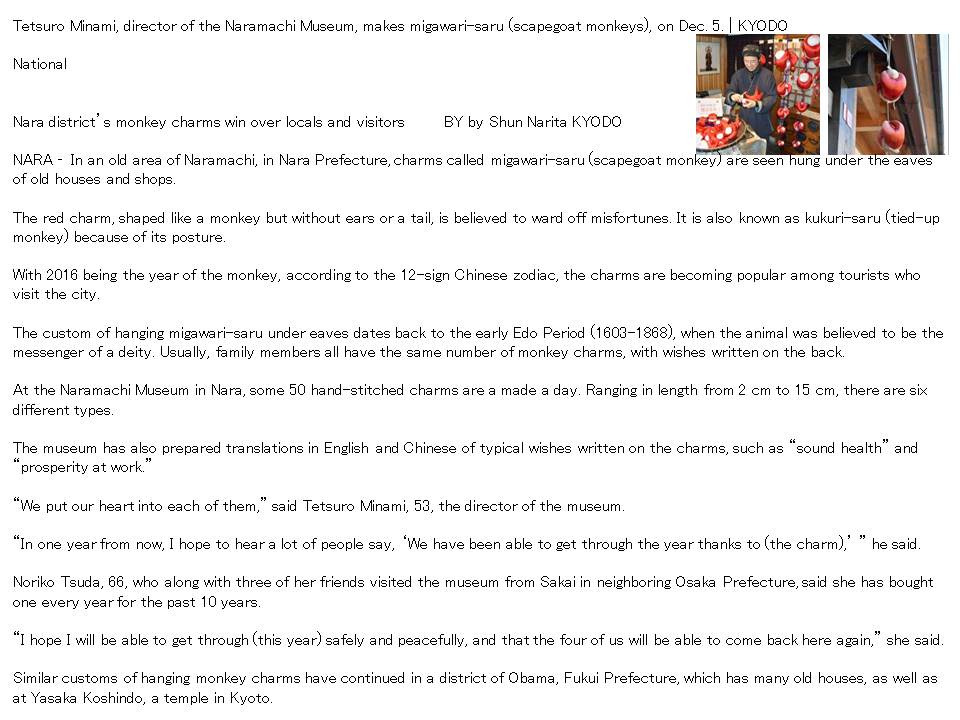

- 掲載媒体
- The Japan Times Facebook
- 掲載日
- 2016年1月14日
掲載内容Contents
【The Japan Times】 Facebook
~身代り申、心を込めて作成してます~
1月14日
The Japan Times Facebook にもアップして頂きました。
Tetsuro Minami, director of the Naramachi Museum, makes migawari-saru (scapegoat monkeys), on Dec. 5. | KYODO
National
Nara district’s monkey charms win over locals and visitors
BY by Shun Narita KYODO
NARA – In an old area of Naramachi, in Nara Prefecture, charms called migawari-saru (scapegoat monkey) are seen hung under the eaves of old houses and shops.
The red charm, shaped like a monkey but without ears or a tail, is believed to ward off misfortunes. It is also known as kukuri-saru (tied-up monkey) because of its posture.
With 2016 being the year of the monkey, according to the 12-sign Chinese zodiac, the charms are becoming popular among tourists who visit the city.
The custom of hanging migawari-saru under eaves dates back to the early Edo Period (1603-1868), when the animal was believed to be the messenger of a deity. Usually, family members all have the same number of monkey charms, with wishes written on the back.
At the Naramachi Museum in Nara, some 50 hand-stitched charms are a made a day. Ranging in length from 2 cm to 15 cm, there are six different types.
The museum has also prepared translations in English and Chinese of typical wishes written on the charms, such as “sound health” and “prosperity at work.”
“We put our heart into each of them,” said Tetsuro Minami, 53, the director of the museum.
“In one year from now, I hope to hear a lot of people say, ‘We have been able to get through the year thanks to (the charm),’ ” he said.
Noriko Tsuda, 66, who along with three of her friends visited the museum from Sakai in neighboring Osaka Prefecture, said she has bought one every year for the past 10 years.
“I hope I will be able to get through (this year) safely and peacefully, and that the four of us will be able to come back here again,” she said.
Similar customs of hanging monkey charms have continued in a district of Obama, Fukui Prefecture, which has many old houses, as well as at Yasaka Koshindo, a temple in Kyoto.
